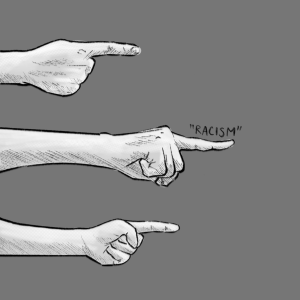Kazakhstan Government Claims 164 Dead After Week of Mass Protests
February 6, 2022
Kazakhstan was engulfed in protests throughout the first week of January. According to government figures, 164 people were killed in clashes between police and protestors. Nominally, fuel prices were the cause of this unrest, but as the events of the week unfolded, it became clear that the regime itself was the true reason for the Kazakh people’s outrage.
The protests began in the Western Kazakh city of Zhanaozen. Being relatively isolated, access to transportation and, thus, gasoline is a major issue for residents. On January 1st, the government decided to increase LPG fuel prices from $0.19 to $0.27 per liter. Residents protested the price increase, calling for the government to restore the old price. According to Eurasianet, “As a concession, fuel stations in Mangystau Region have cut prices for LPG back to 85-90 tenge. But none of this pacified the angry demonstrators in Zhanaozen, whose grievances were taken up by others around Kazakhstan.” For these protestors, fuel was only the trigger—after all, the government quickly lowered fuel prices—the real reason for this civil unrest was Kazakhstan’s three decades of authoritarian rule and corruption.
The Kazakh state, which ranks 128th in the Democracy Index, has repeatedly been accused of election fraud, corruption, and human rights abuses. The former president, Nursultan Nazarbayev, led the country from its founding after the collapse of the USSR until 2019. Nazarbayev resigned the presidency after a series of public protests but retained his roles as chairman of the Security Council and leader of the ruling Nur Otan party as well as his title of “Leader of the Nation,” leading many Kazakhs to believe that he was still making the decisions even after his retirement.
Because of its authoritarian history and tendencies, mistrust in the Kazakh state has always been just beneath its surface.
Because of its authoritarian history and tendencies, mistrust in the Kazakh state has always been just beneath its surface, but active dissent had been suppressed by the security forces, and the lid finally blew off this time. On January 3rd, protests spread to the cities of Nur-Sultan, Almaty, Aktobe, Atyrau, and Aktau, where encampments were built by protestors demanding the resignation of the government. These protests quickly turned violent. According to the Guardian, “Many of those demonstrating said the protests had begun peacefully earlier in the week, and turned violent after a heavy-handed government response.”
Almaty, Kazakhstan’s largest city, was the most affected by the riots. On January 5th, protestors toppled a statue of Nazarbayev while shouting “old man out” and fought their way through police formations until they arrived at the mayor’s office and the presidential palace, which they proceeded to burn down. Dozens of protesters were shot by police, causing further open confrontation. Police were not spared either: at least 18 members of the security forces were killed by protestors, and one was even beheaded. Authorities quickly lost control of the situation and were on the verge of losing control of major cities. Vandalism and violence continued throughout the day, taking the lives of many more. Authorities disabled internet access to prevent further dissent.
Current President Kassym-Jormart Tokayev, Nazarbayev’s handpicked successor, took to state TV to denounce protestors as “international terrorists” and request CSTO’s (the Russian-led equivalent of NATO) assistance in quelling the riots. This was granted, and a mainly Russian military force began flying into the country the next day. These troops assisted Kazakh authorities in retaking important buildings and clearing the streets of protestors.
Will Kazakhstan democratize or was this simply a consolidation of Tokayev’s power?
On January 7th, in a televised address, Tokayev made the statement, “I gave an order to law enforcement agencies and the army to shoot to kill without warning.” It is unclear to what extent this order was carried out, with sporadic gunfire being heard throughout the weekend, but authorities did shoot protestors because of the order. The protests were overwhelmed and ended on January 11th.
Later that day, Tokayev announced that CSTO forces would begin a withdrawal by the 13th. Then, in an unprecedented move, he criticized his predecessor by saying that Nazarbayev had created “a layer of wealthy people, even by international standards” and that “I believe that the time has come to pay tribute to the people of Kazakhstan and help them on a systematic and regular basis.” This, coupled with the fact that notable Nazarbayev allies such as the former security chief were recently arrested for “high treason,” suggests that the Nazarbayev family may have finally lost control of Kazakhstan.
After the protests concluded, Kazakh authorities began rounding up people associated with the protests. As of January 13th, around 10,000 people have been detained with many still in police custody.
So, have the protesters’ demands been met? Not completely. Among the demands were direct elections of local officials, fuel price decreases, the resignation of Tokayev’s government, removal of Nazarabayev’s legal immunity and political influence, and general democratization. So far, the prime minister and his cabinet has resigned, Nazarbayev has been removed from the Security Council, and fuel prices have been lowered to $0.11 per liter for six months. It is still unknown what other concessions will be made to prevent future protests or how these protests will affect the region as a whole. Will any of these other demands be met? How will Russian authorities react to similar protests in their own territory? Will Kazakhstan democratize or was this simply a consolidation of Tokayev’s power? What happens next depends on civil society, the CSTO, and the Kazakh state’s willingness to listen to its people.








